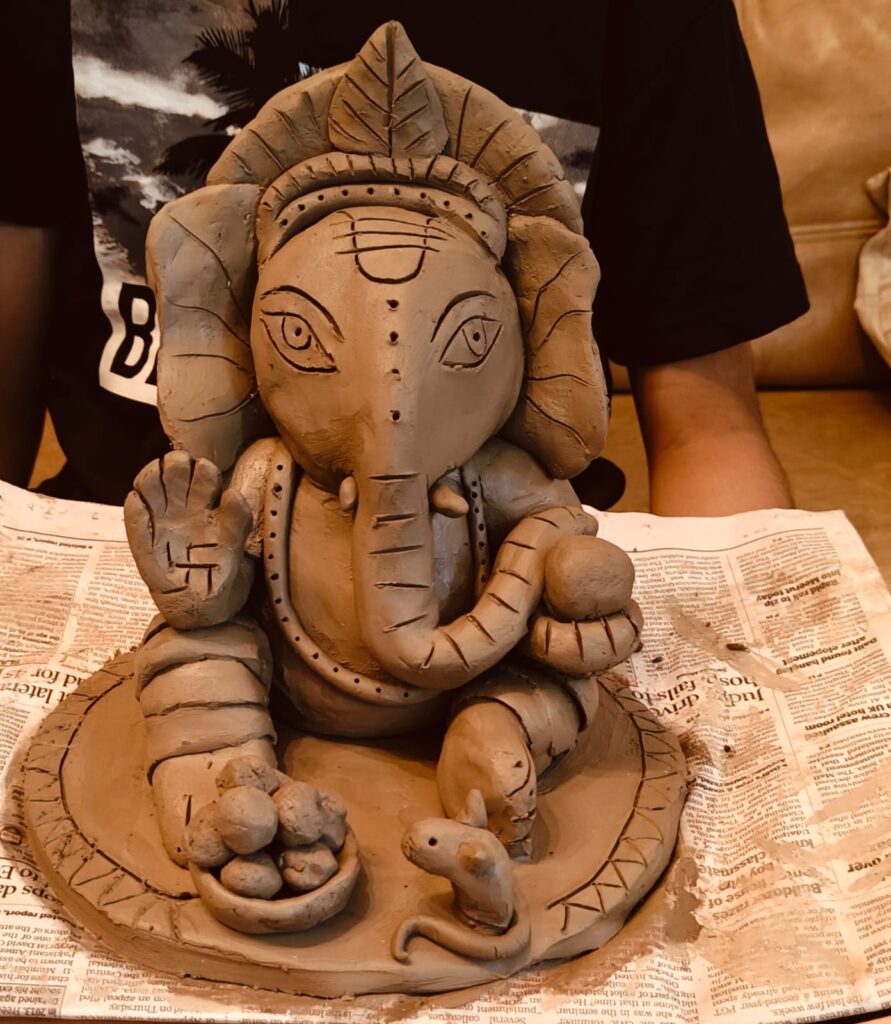Ganesha is revered as a mystic God, as well as most distinctive with the head of an elephant, having many enigmatic stories and rich symbolism that makes Him stand out and loved worldwide. He is said to remove obstacles and bring good luck. What can be the better way to teach important lessons of life that Ganesh signifies than sculpting Him in clay with little hands.
‘Sculpting Ganesha in Clay’ workshop was held for the underprivileged at Jamghat Pathshala Noida (Richa Anirudh’s initiative to educate underprivileged children who cannot go to regular schools) on 03 September by artist Tanvi Sariya (who has an art studio in Noida) with a Noida NGO. This was her third year with the pathshala.
Tanvi Sariya has been promoting eco-friendly, clay Ganesha that can be immersed at home in a water tub, and the clay reused in pots. She conducts workshops for NGOs, societies, clubs and corporates; spreading the message to save Mother nature and its valuable treasures by returning to our ancient traditions and resources that help to cleanse than pollute Nature.
Ganesh Chaturthi is an exciting festival, started on 06 September this year for ten days, celebrating the birth of Lord Ganesha. On Ananta Chaturdashi the idols of Lord Ganesha are immersed in the sea, rivers, lakes and ponds. This ceremony marks the farewell of the deity to his abode. It is believed that after the idols are worshipped, they must be immersed in the water body because only Mother earth’s running water can bear its power and energy.
During earlier times idols were made from natural materials and paints used were water soluble. A village or community used to install an idol. Now idols are made up of plaster of paris, painted with oil colours containing heavy metals. Each village, town or city has hundreds, thousands of installations. Have we ever thought! Do we have enough water bodies for immersion of these idols? It reduces oxygen level in water, alter the physio-chemical attributes of the water body like hardness, acidic content killing fishes and other aquatic beings. Chemical paints, varnish and polish used on idols contain heavy metals like chromium, mercury, lead and cadmium which harm aquatic life and animals, and humans who depend upon water bodies for their daily needs. A serious health threat also exists for scavengers, who are in most cases, young children from lower economic strata of society.





Popular Stories
How To Revive Your Rainwater Harvesting System
The Water Couple’s Journey: From Cleaning Tanks to Complete Water Solutions!
Locals Felling Trees Near Sec A Pkt C
Winning Has Become a Habit for Divya
Is Green Park Heading Towards A Slum
Haphazard Parking, Narrow Walking Space In M Block Market
Recent Stories from Nearby
- Elections at Silver Oaks April 5, 2025
- Silver Oaks Rangotsav: A Vibrant Celebration of Holi April 5, 2025
- Sarvam Shakti: A Decade of Empowerment and Grace April 5, 2025
- Turning Waste into a Valuable Resource April 5, 2025
- Stray Dogs Menace & Management, A Block Extension April 5, 2025







